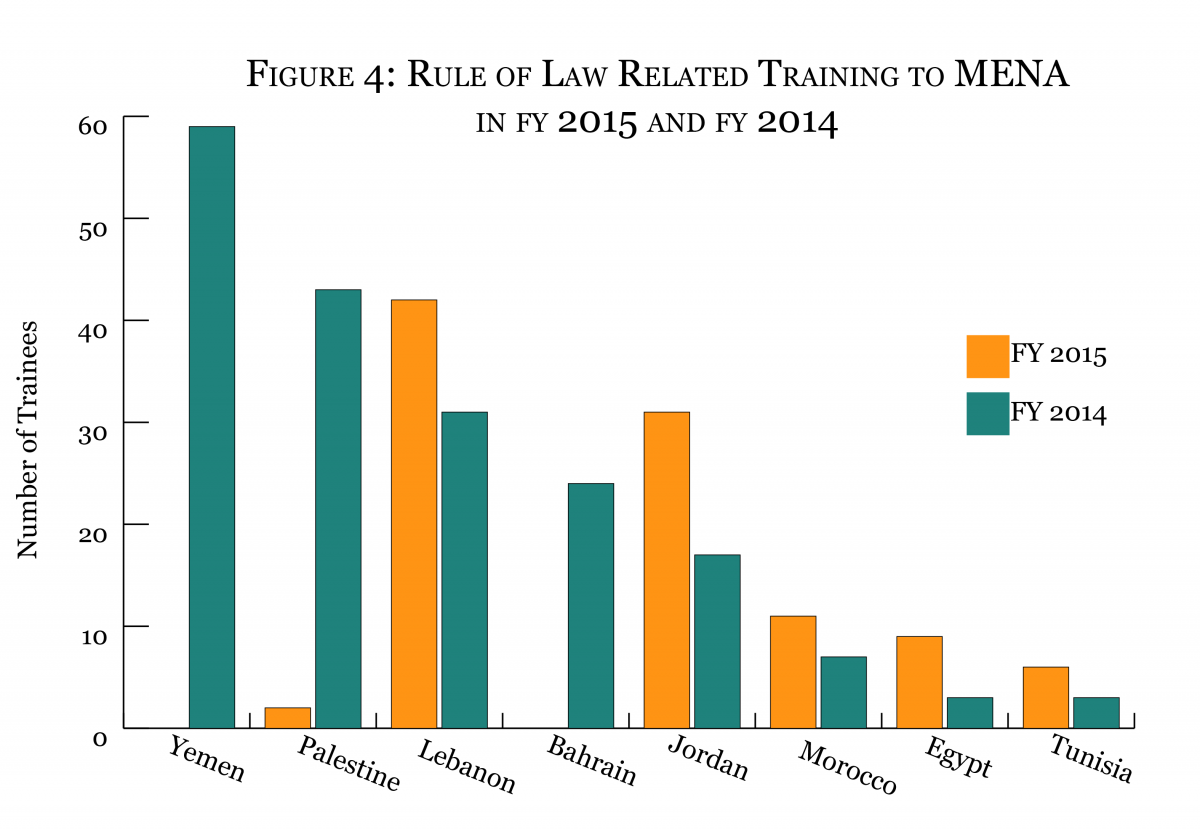Major Increase in US Foreign Military Training Driven by New US Peacekeeping and Counter-Narcotics Efforts
Press Release
Washington, DC – The number of US foreign military trainees increased substantially in FY 2015, growing from 56,346 in FY 2014 to 79,865 in FY 2015, according to a new Security Assistance Monitor (SAM) report released today on trends in US foreign military training. The report, which is based on an analysis of the US “Foreign Military Training” report released earlier this year, marks the highest number of US military trainees in any year since FY 2006.
The increase in US foreign military trainees was driven by a major bump in US military training aimed at improving African militaries’ effectiveness in peace operations and enhancing foreign security forces from around the world to better tackle the illicit drug trade and transnational organized crime groups. The countries with the highest number of US military trainees in FY 2015 were Burundi, Rwanda, Colombia, Lebanon, and Uganda.

The report also provides a window into the US military training initiatives the Trump Administration may reduce or eliminate as part of its effort to reduce US foreign aid. Administration officials have called for or indicated a desire to cut US peacekeeping, counter-narcotics, weapon’s maintenance, and nation-building aid. They have also shown an unwillingness to curb arms sales to countries where allegations of serious human rights violations exist.
To receive upcoming reports as well as the latest news and analysis on U.S. security assistance, click here to sign up for the Security Assistance Monitor's Weekly Monitor.
Peacekeeping and Counter-Narcotics
The United States provided training to 33,871 trainees from Sub-Saharan African countries through the Peacekeeping Operations program in FY 2015, up from 15,981 trainees in FY 2014. The African countries that saw the largest increase in trainees – Burundi, Cameroon, Niger, and Tanzania – are supporting US counter-terrorism and/or a new US peacekeeping efforts.
“While there are many questions about the effectiveness of some US foreign military training, the idea of major cuts to this training without an a deeper analysis poses risks to US foreign policy efforts,” said report co-author Colby Goodman, Director of the Security Assistance Monitor. “These risks include reduced collaboration with key allies and a potential loss of insights into foreign security threats,” said Goodman.
The Defense Department also doubled the number of individuals that received military training through the Section 1004 counter-narcotics and counter-transnational organized crime program from FY 2014 to FY 2015. Lebanon saw the greatest increase, moving from no trainees in FY 2014 to 3,424 trainees in FY 2015, to help stem a source of income for Hezbollah. There were also major increases in Section 1004 training to countries from Central Asia, West Africa, and Central America.
Other Training Increases and Human Rights Concerns
The report shows increases in other types of US foreign military training the Trump Administration may cut or reduce. From FY 2014 to FY 2015, the United States increased training by nearly 60 percent on how to operate and maintain US weapons systems through the Foreign Military Financing program, which the administration had proposed to cut by $200 million in FY 2017. The US government also substantially increased training in cyber security issues to Europe and Eurasian countries to combat Russian cyber attacks.
There was an increase in US rule of law-related training to countries in Latin America and Sub-Saharan Africa. However, there was a 44 percent decrease in such training to countries in the Middle East and North Africa, including for Bahrain, at a time when such training could be critical.

“Numerous studies have shown the importance of US assistance focused on strengthening foreign security institutions,” said Goodman. “The Trump Administration would do well to follow the advice of these studies.”
The report also highlights US foreign military training to several countries or foreign security force units where there are allegations of serious human rights violations. At least 641 trainees from Saudi Arabia were slated to receive US training on seven different types of US military aircraft, some of which have been used in the conflict in Yemen. Despite the United States halting US peacekeeping aid to Burundi in late May 2015, the US government initiated training for at least 251 Burundians after that date.
Additional Trends
- The US government increased training focused on crew operations for sea vessels through the Foreign Military Financing program to Egypt from FY 2014 to FY 2015.
- The United States supported Colombians to train Central Americans in courses such as riverine operations, naval intelligence, and infantry tactics.
- There was a 42 percent drop in US foreign military trainees from East Asia and the Pacific from FY 2014 to FY 2015.
- At least 52 individuals from China participated in US security cooperation events focused on counterterrorism and maritime security in FY 2015.
SAM is a program of the Center for International Policy focused on increasing transparency and analysis on US security assistance. We first began to focus on US military training in the 1990s, when we were then known as “Just the Facts”. Today, SAM researches and documents US security assistance around the world, and synthesizes it into the most thorough and current, publicly available database on US security aid, arms sales and military training for journalists, policymakers, scholars, and analysts.
For additional information or interview requests, please contact Seth Binder at Seth@ciponline.org or 202-232-3317 ext. 109. Click here to sign up for the Security Assistance Monitor's Weekly Monitor.
